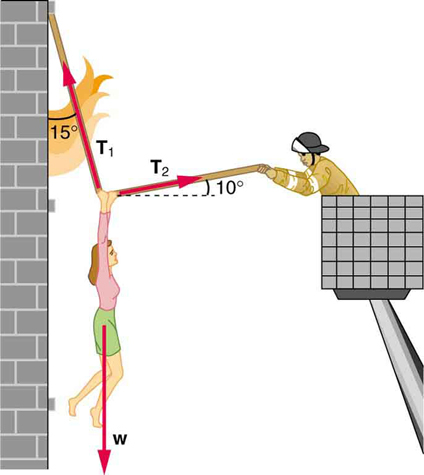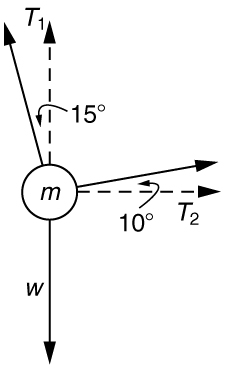9 Examples
Example 1.1 Unit Conversion
Now we can set up our unit conversion. We will write the units that we have and then multiply them by the conversion factor so that the units cancel out, as shown:
Example 1.2 Convert km/h to m/s and ft/s
Convert 3 km/h to a) m/s and then b) ft/s.
Solution
Remember that 1 k = 1000 or 1 km = 1000 m.
Remember that 1 hour = 60 minutes and 1 minute = 60 seconds so 1 hour = 3600 seconds.
a) [latex]3 \: \: {km/h} = \frac { 3 \: km}{h} ( \frac {1000 \: m} { \: km} ) ( \frac {1 \: h} {3600 \: s}) = \frac {3000 \: } {3600 \: s} \: = \: 0.8333333 \: {m/s}[/latex]
= 0.833 m/s to three significant figures.
b) Now to convert to ft/s there is two ways to do this. Remember that 1 inch is exactly 2.54 cm so 1 foot = 0.3048 m.
[latex]0.833 \: {m/s} = ( \frac {0.833 \: m} {s} ) \: ( \frac {1 \: {ft}} {0.3048 \: m}) = \: 2.73293963 \: {ft/s}[/latex]
= 2.73 ft/s to three significant figures.
or do this all in one step
[latex]3 \: \: {km/h} = \frac { 3 \: km}{h} ( \frac {1000 \: m} { \: km} ) ( \frac {1 \: h} {3600 \: s}) ( \frac {1 \: {ft} } {0.3048 \: m} ) \: = \: 2.734033 \: {ft/s}[/latex]
= 2.73 ft/s to three significant figures.
You can see that it does not matter in which order you do the conversion as long as you round off to the three significant figures at the end.
Example 1.3 average speed
Suppose that you drive the 10.0 km from your university to home in 20.0 min. Calculate your average speed (a) in kilometers per hour (km/h) and (b) in meters per second (m/s). (Note: Average speed is distance traveled divided by time of travel.)
Strategy
First we calculate the average speed using the given units. Then we can get the average speed into the desired units by picking the correct conversion factor and multiplying by it. The correct conversion factor is the one that cancels the unwanted unit and leaves the desired unit in its place.
Solution for (a)
(1) Calculate average speed. Average speed is distance traveled divided by time of travel. (Take this definition as a given for now—average speed and other motion concepts will be covered in a later module.) In equation form,
(2) Substitute the given values for distance and time.
(3) Convert km/min to km/h: multiply by the conversion factor that will cancel minutes and leave hours. That conversion factor is 60 min/hr. Thus,
Discussion for (a)
To check your answer, consider the following:
(1) Be sure that you have properly cancelled the units in the unit conversion. If you have written the unit conversion factor upside down, the units will not cancel properly in the equation. If you accidentally get the ratio upside down, then the units will not cancel; rather, they will give you the wrong units as follows:
which are obviously not the desired units of km/h.
(2) Check that the units of the final answer are the desired units. The problem asked us to solve for average speed in units of km/h and we have indeed obtained these units.
(3) Check the significant figures. Because each of the values given in the problem has three significant figures, the answer should also have three significant figures. The answer 30.0 km/h does indeed have three significant figures, so this is appropriate. Note that the significant figures in the conversion factor are not relevant because an hour is defined to be 60 minutes, so the precision of the conversion factor is perfect.
(4) Next, check whether the answer is reasonable. Let us consider some information from the problem—if you travel 10 km in a third of an hour (20 min), you would travel three times that far in an hour. The answer does seem reasonable.
Solution for (b)
There are several ways to convert the average speed into meters per second.
(1) Start with the answer to (a) and convert km/h to m/s. Two conversion factors are needed—one to convert hours to seconds, and another to convert kilometers to meters.
(2) Multiplying by these yields
Discussion for (b)
If we had started with 0.500 km/min, we would have needed different conversion factors, but the answer would have been the same: 8.33 m/s.
You may have noted that the answers in the worked example just covered were given to three digits. Why? When do you need to be concerned about the number of digits in something you calculate? Why not write down all the digits your calculator produces?
Special thanks to OpenStax College Physics for the inspiration for these examples. You can download this excellent open educational resource at https://openstax.org/books/college-physics/
Examples: Equilbrium
A 76.0-kg person is being pulled away from a burning building as shown in the image below. Calculate the tension in the two ropes if the person is momentarily motionless. Include a free-body diagram in your solution.

Answer
T1 = 736 N T2 = 194 N as net force is 0 N so using magnitudes only
T1 cos 15º + T2 sin 10° = Weight = mg and
T1 sin 15° = T2 cos10°

This CCBY example is from OpenStax College Physics. You can access the whole book at https://openstax.org/details/books/college-physics.
Examples
More examples
- First
- Second

